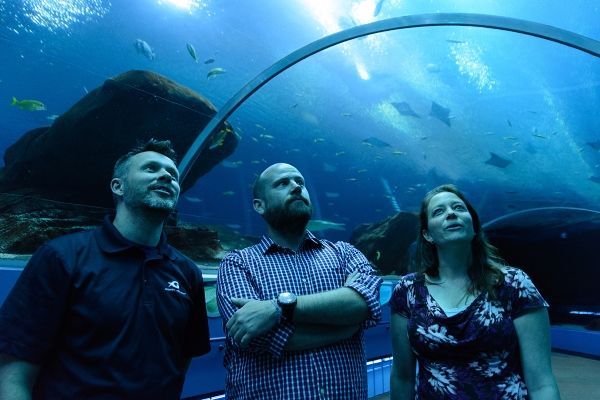How natural can the seawater in a large inland aquarium be? A bacterial study at Georgia Aquarium gives scientists a good sign.
Sea creatures need to go to the bathroom, too, and in aquariums, that creates the task of cleaning the water of waste like ammonia, nitrites and nitrates. Good bacteria break down nitrogen compounds at Georgia Aquarium, and in a new study, some bacterial communities there emulated those found naturally in oceans surprisingly well.
“It was phenomenal. I didn’t expect this,” said Frank Stewart, principal investigator of the study led by the Georgia Institute of Technology. “The microbial communities are seeded from microbes coming from the animals and their food in an aquarium that does not tap into the ocean. But these looked like natural marine microbial communities.”
That’s happy news for the thousands of sea fauna, including whale sharks, manta rays and a sea turtle named “Tank,” who live in Georgia Aquarium’s Ocean Voyager, the largest indoor oceanic exhibit in the United States with nearly 24 million liters (6.3 million gallons) of constituted sea water. The researchers analyzed two bacterial communities in the exhibit over time and studied their water cleaning abilities.
Continue reading at Georgia Tech.
Image via Georgia Tech.


